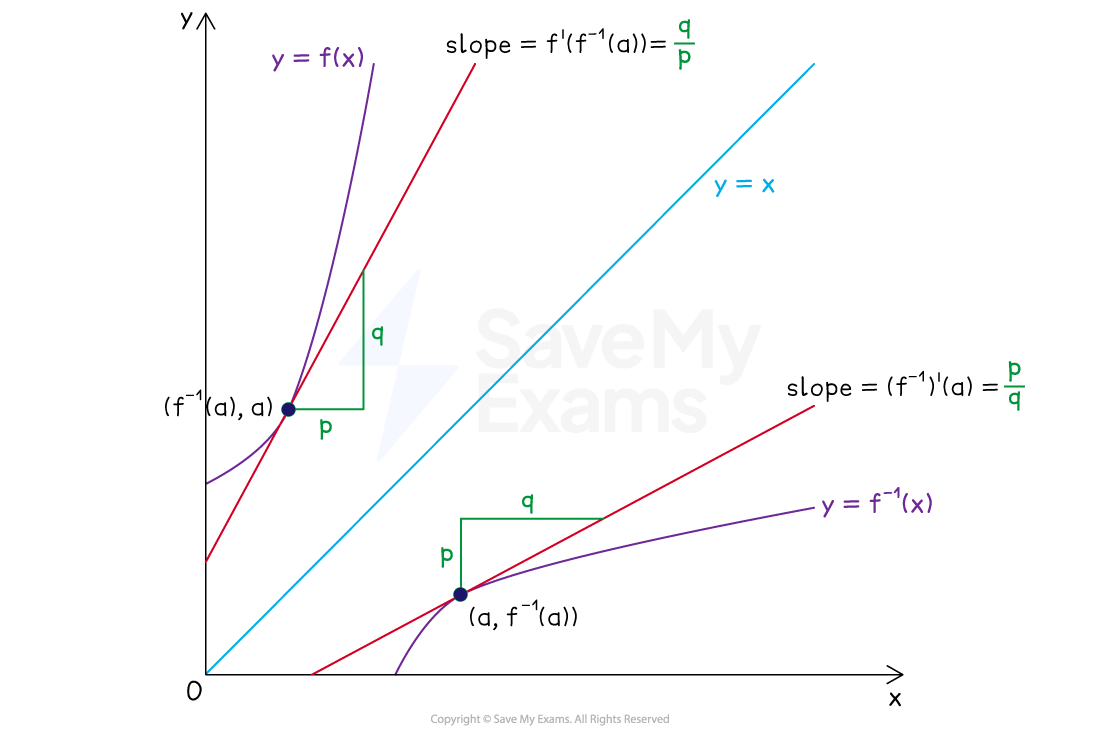The Inverse Function Theorem (College Board AP® Calculus BC) : Study Guide
The reciprocal of a derivative
What is the reciprocal of a derivative?
Derivatives are not fractions, but they behave in the same way as fractions when finding reciprocals
The reciprocal of
is
This is only true if
Likewise, the reciprocal of
is
This is only true if
This property is useful when:
Finding the derivative of the inverse of a function
Relating rates of change to one another using the chain rule
Derivatives of inverse functions
How are the derivatives of a function and its inverse related?
Provided that a function
is:
Differentiable
A one-to-one function (so that it has an inverse,
)
Its inverse,
at the point
will be differentiable and the derivative of the inverse at this point will be equal to:
This is provided that
You may also see this written as:
Where
This is provided that
This is known as the inverse function theorem
To explain why this is true, consider the diagram below

The diagram shows that because the graphs of
and
are reflections in the line
:
If the slope of
at
is
,
then the slope of
at
will be
This also means that the theorem does not hold if
The derivates of these functions at these points are reciprocals of one another,
this helps explain why the equation
is true
If
so that
,
then the inverse function theorem can be written as
This form can be more useful for finding an expression for the derivative of the inverse, but it will be in terms of
rather than
The form stated earlier is more useful for finding the derivative of the inverse at a point
How is the inverse function theorem derived?
The inverse function theorem can be derived using the definition of an inverse, and the chain rule
Let
As
and
are inverses of each other,
Differentiate both sides with respect to
Apply the chain rule to the left hand side, the right hand side differentiates easily
Rearrange
Recall that
Worked Example
Let and let
be the inverse function of
.
Given that , what is the value of
?
Answer:
Write the inverse function theorem using and
We are trying to find , so fill this in
We need to find and
to be able to calculate the value
Find by differentiating
using the chain rule
Using the statement , find the inverse of this
is the inverse of
We now have all the information we need, so substitute these in
Worked Example
The function is defined by
.
Show that the inverse of exists, and then find the derivative of the inverse of
at the point where
.
Answer:
First check that the inverse exists
, which is always positive
So is always increasing, which means it is a one-to-one function
Therefore exists
Use the inverse function theorem
We are trying to find the derivative of the inverse at , or
Fill this in
We already know from the first step that
So we just need to find ; this is the inverse of
, when
To find an equation for the inverse of , simply switch
and
Inverse:
Find the inverse when
Fill this in

You've read 0 of your 5 free study guides this week
Sign up now. It’s free!
Did this page help you?

